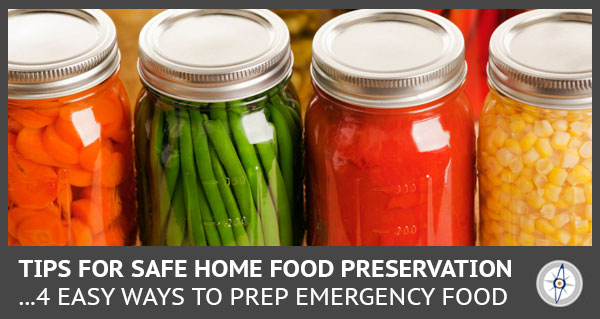
Most families are not financially able to buy a year’s worth of food that they won’t eat right away. It is tough to fill your cart with food and then stash it in your emergency food supply, waiting for that rainy day. This is often a reason many people decide they can’t possibly prepare to survive an emergency. But good news, it doesn’t have to cost you a fortune…especially all at one time. You can help lessen the financial burden by learning home food preservation.
Buying produce or meat in bulk is going to be much cheaper than buying cases of commercially prepared food. You can also preserve the excess from your garden or from the livestock you raise. If you live in an area where there are farmers or farmer’s markets, you have an excellent resource at your disposal.
Check Craigslist and the local ads to find some really great deals on food you can preserve.
Tips for Safe Home Food Preservation
Home food preservation is completely safe if you follow these guidelines. Before you prepare to preserve any food, there are some basic rules you need to abide by:
– Only buy food you will preserve from reputable sources if you aren’t growing your own
– Don’t attempt to preserve food that is close to spoiling or shows signs of molding or spoilage
– Always clean and sanitize your utensils and preservation tools
– Properly label each package/can with dates
– Only use recipes that have been tested and proven—do test runs before preserving a large batch with an untested recipe
– Try to limit the additives, like sugar and salt to canned goods
– Check your equipment before starting and make sure it is in good working order, pressure canners should have seals in good condition
– Don’t used jars with tiny cracks
– Avoid using bands that have rust
– Always use new lids for canning food
The following methods are perfect for preserving your food.
Canning
This is one of the tried and true ways to preserve food that has been passed down for generations. Home canning is an excellent way to preserve everything from fruit and vegetables to bacon, stew and meat. You can home can just about anything with a little skill, practice and a pressure canner. Fruits and jams can be preserved in a boiling water bath and don’t need the extensive process of being put into a pressure canner.
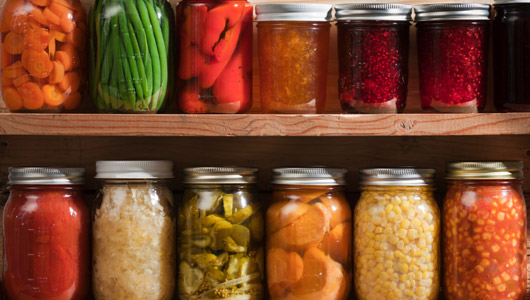
Another method people use to preserve dried goods is by canning them in the oven. Low heat is used to heat the jars and the food inside. The lid and bands are placed on the jars once they are removed from the oven. The heat trapped inside will seal the jars, preserving the food inside.
There are some tricks and guidelines you will want to follow to ensure you are safely preserving your foods. If you are not familiar with canning, it is a wise idea to attend a free or low-cost canning seminar at your local co-op or with a local prepping group.
Drying
Drying food is going to be the method of choice in a post-apocalyptic situation when electricity and fuel are not readily available. It’s just like it sounds; the sun will be your heat source.
Food will need to be sliced super thin and either hung out on fishing line like a clothesline or placed on screens. This method can be used to safely dry meat, vegetables and fruits.
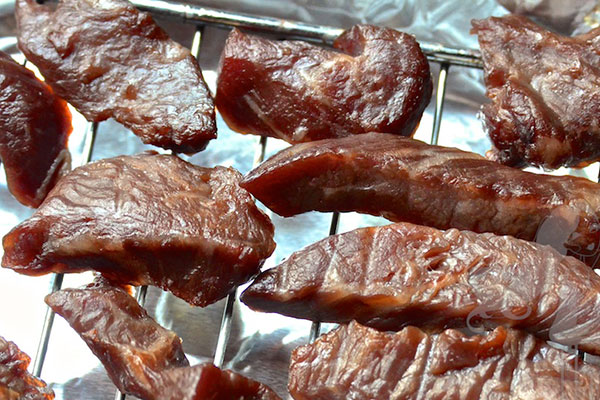
You can rub the meat down with salt to add flavor and to help it dry quicker.
While drying food in this manner is primitive, it doesn’t hurt to practice a little. It will help give you an idea of how long it takes to completely dry as well as how to properly cut the food.
Dehydration
This is another common method of preserving a meats, vegetables and fruits. It is similar to drying, but the process is much faster. In today’s world, an actual dehydrator is used to dry foods in under 12 hours.
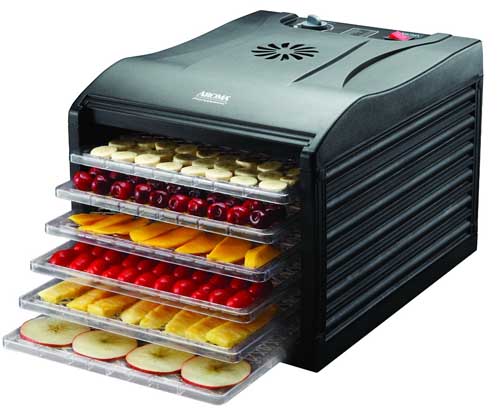
Modern food dehydrator
Removing moisture from the food you will preserve allows it to sit on a shelf without mold growing. The trick is to remove as much moisture as possible, but not to remove so much moisture the food becomes brittle or excessively hard.
Food dehydration is a bit of an art form and you will want to experiment with dehydrating times now.
When you think about life after a major event, you can use what is called a solar dehydrator. Building a box with legs that will set off the ground is fairly simple and can be done with scrap wood.

Use an old window or heavy plastic over the top of the box to generate heat and protect the food inside. You can use an old window screen as the bottom of your dehydrator.
Place the food on the screen, place the glass or plastic over the top and you have a quick, effective way to dehydrate your food for storage without using any electricity.
Freezing
Freezing is a super easy method of preserving food and keeping it in its most natural form. It is a quick and easy way to preserve meats, prepared meals, fruits and vegetables.
HOWEVER, imagine putting all of your effort and food into the freezer only to have the power fail. Your hard work and your family’s food would be destroyed.
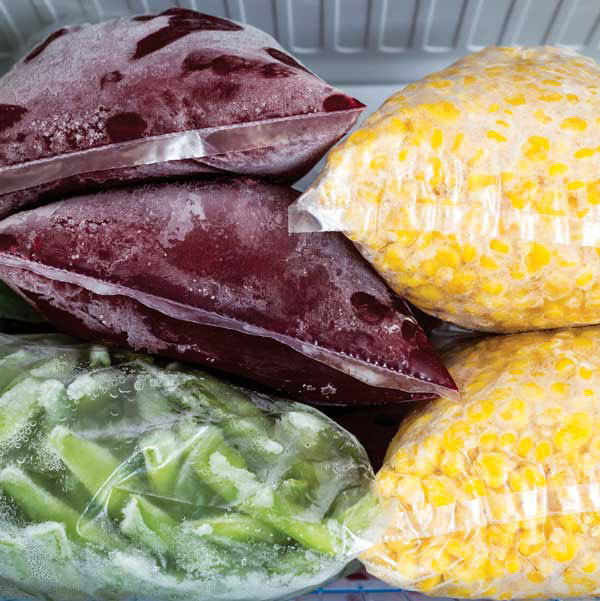
While you can certainly preserve some of your food for those nights you don’t want to cook dinner, be cautious about freezing the majority of your food supply.
It would be a wise idea to have a backup generator on standby if you have a freezer full of meat. This will help keep your food safe in short-term power outages. See some tips for keeping food longer if this happens to you.
Final Thoughts
Home food preservation is a valuable skill you must take the time to learn now, before you are in a situation where it is an absolute necessity. There is a learning curve. Knowing the ins and outs means you won’t have to worry about wasting a single morsel of food when it really counts. Experiment with all forms, but focus more on the drying and solar dehydration methods that will be your only options after SHTF.
=====
Become a Survival Dispatch Insider …
We bring together survival enthusiasts and preppers to share skills and knowledge, so you can enhance your preparedness for emergencies and ensure the safety of you and your community.
The Results You’ll Get …
Our community, courses, and memberships are pretty special. We focus on the ways it will make a huge difference in your life.
Here are a few of the things you’ll be able to do as a member of Survival Dispatch Insider …
1) Improve your emergency preparedness by learning survival skills and strategies from experienced preppers.
2) Build lasting connections with like-minded individuals that share your passion for safety and readiness.
3) Access a wealth of knowledge and resources to assist in protecting you and your community during unexpected situations.
Click HERE to get started.
=====
